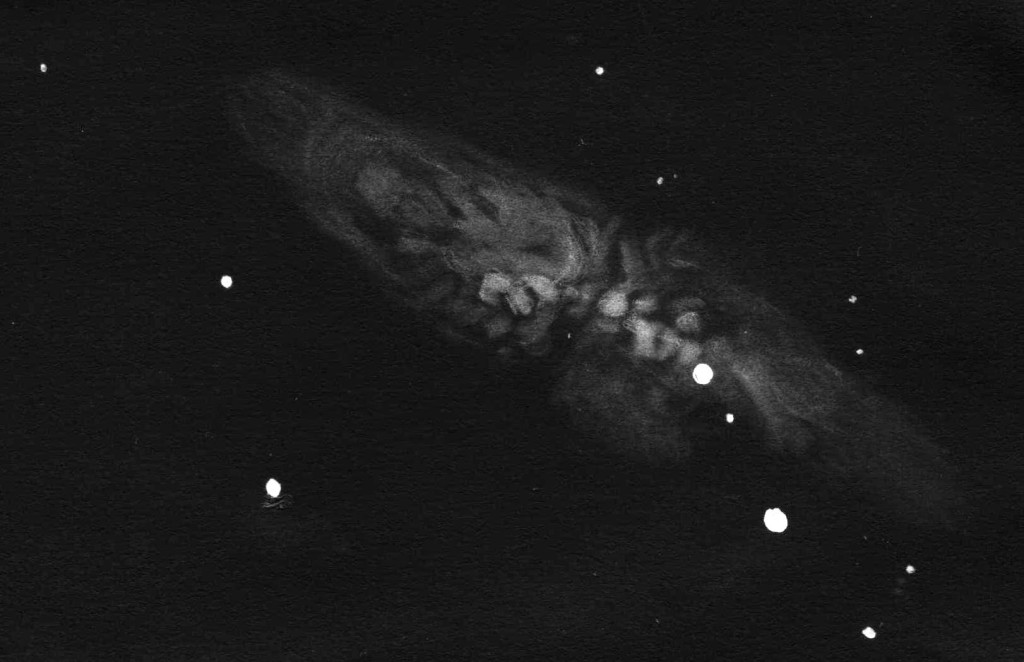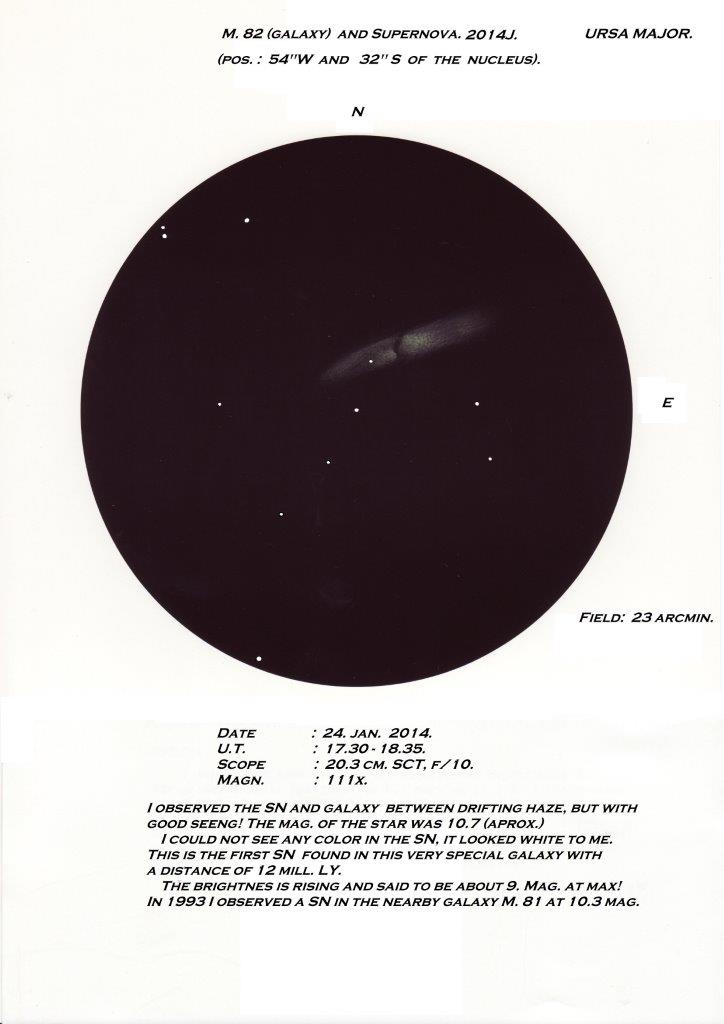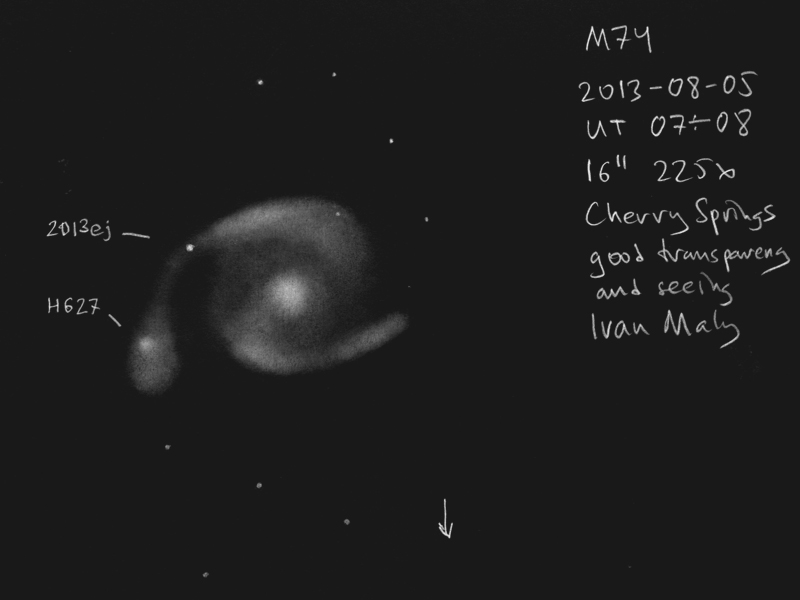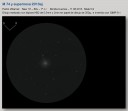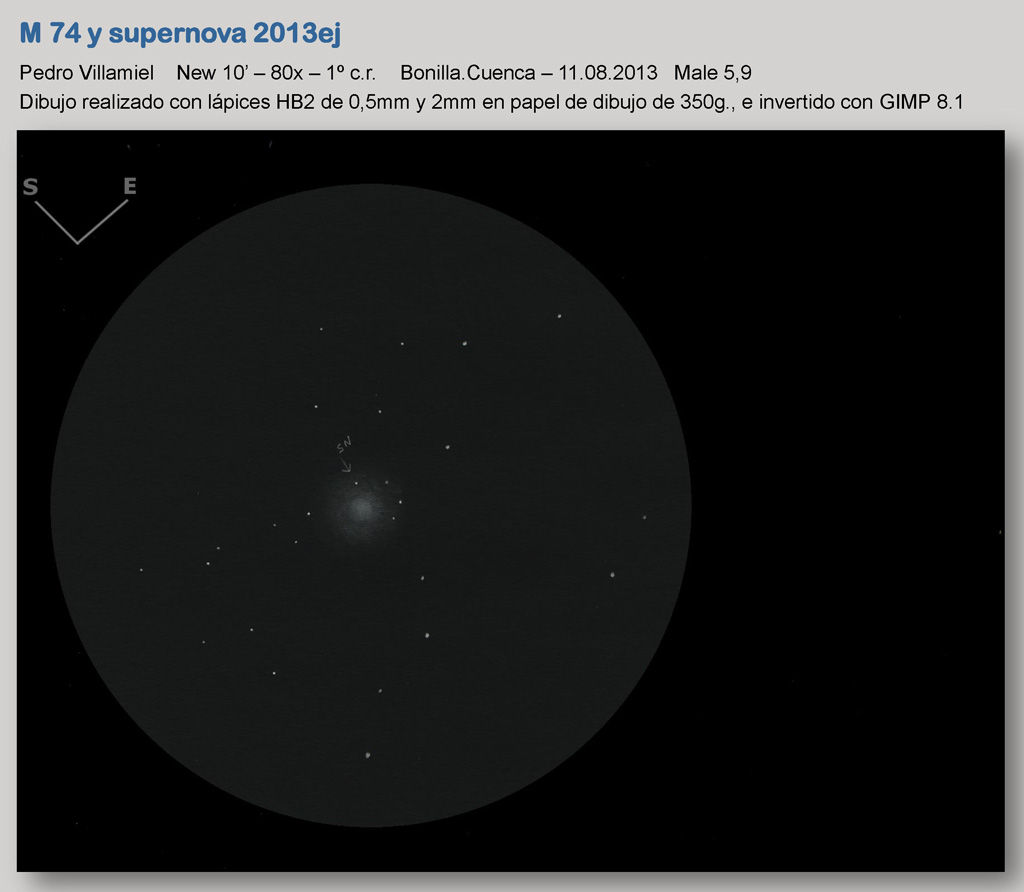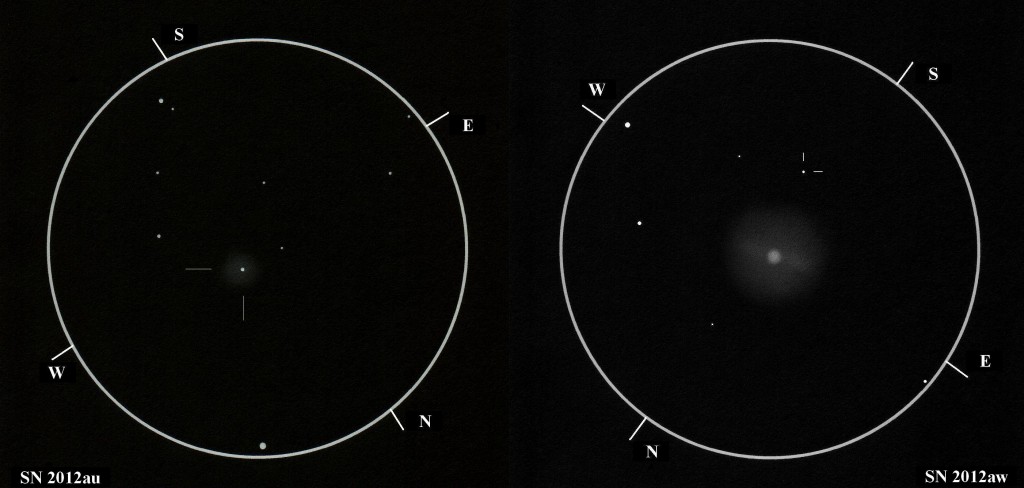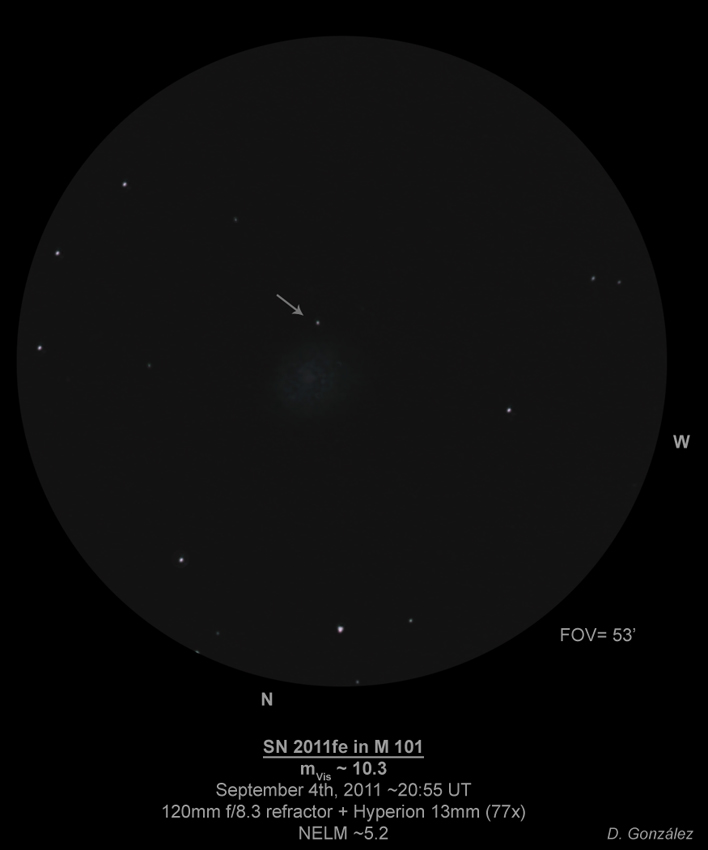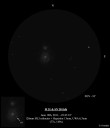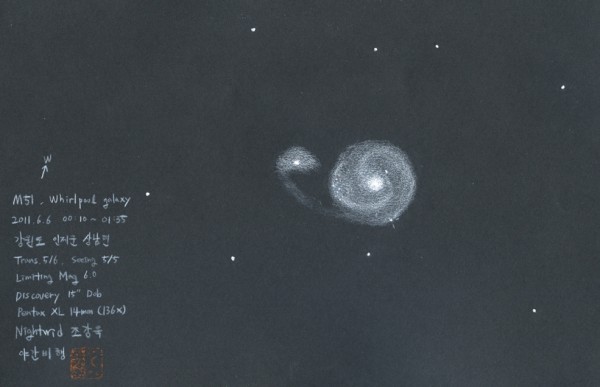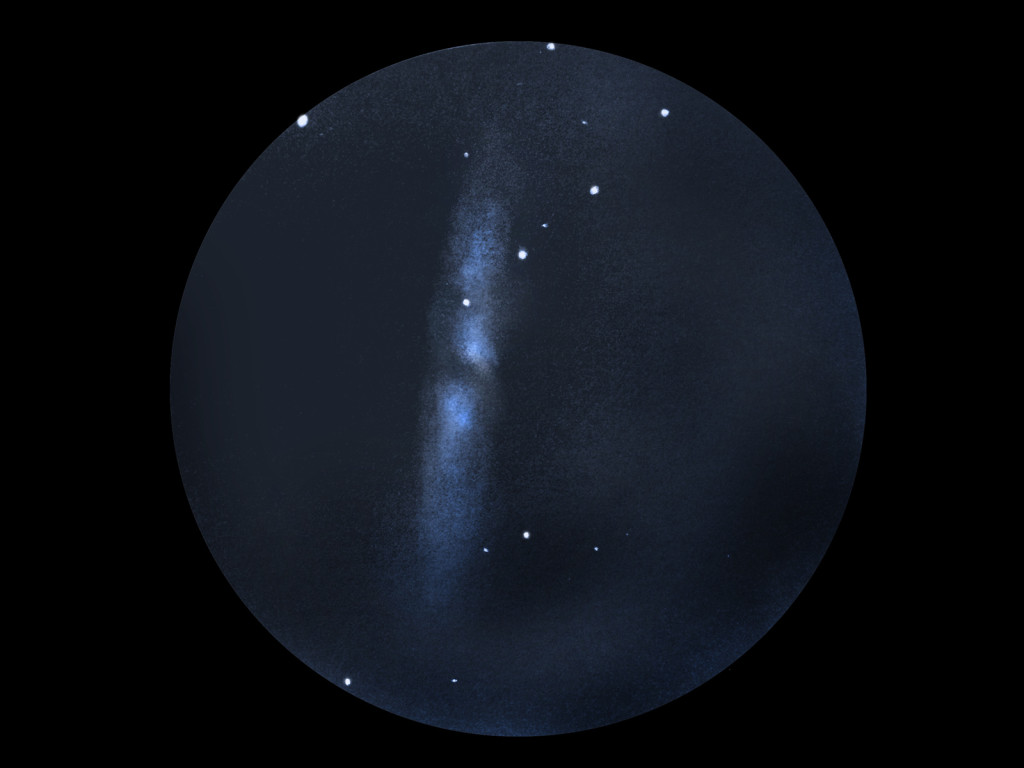
Spectacular view of the supernova in M82 on the night of January 25, 2014
Scketch made at La Hita´s Observatory in La Puebla de Almoradiel, Toledo (Spain).
22:18 UT
With graphite on white paper, looking through TEDI telescope (770 mm, f3.2 ) eyepiece 13mm and the red light of my torch (I call it “the demon” by its two red eyes).
The sky was really clear and pristine, relative humidity 80%. (4.5ºC)
Close to new Moon. My estimate Mag with reference stars is 10.5
Regards
Leonor


